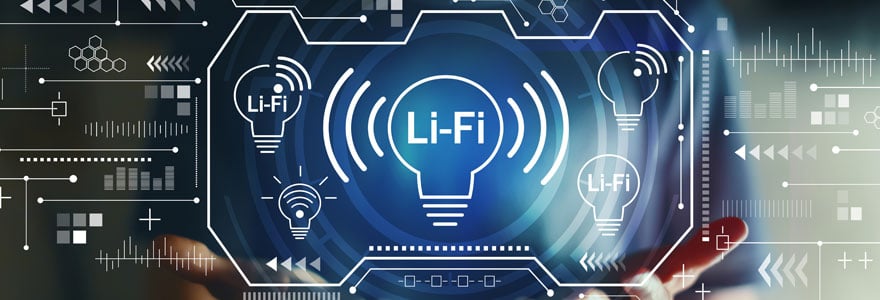
Light Fidelity or Li-Fi is a term for a visible light communication system. Li-Fi technology transmits data using visible light waves, which are then received by a photo-sensitive detector.
This technology has a number of advantages over traditional radio frequency (RF) communications, including higher data rates, lower Costs, and increased security.
Li-Fi technology is still in its infancy, but has the potential to revolutionize the way we communicate wirelessly. Everything you need to know about LiFi solution online.
Li-Fi is a new type of wireless technology
Li-Fi is a new type of wireless technology that uses light to transmit data. It is similar to Wi-Fi, but it uses visible light instead of radio waves to transmit data. Li-Fi is more efficient than Wi-Fi because it can transmit data at a higher speed and over a longer distance. Li-Fi is also more secure than Wi-Fi because it is less likely to be intercepted by hackers.
Li-Fi technology was invented by Professor Harald Haas from the University of Edinburgh in 2011. Professor Haas demonstrated how Li-Fi can be used to transmit data by streaming video from a computer to a LED lamp. The video was streamed at a speed of 10Mbps, which is 100 times faster than the current Wi-Fi standard.
Li-Fi technology is still in its early stages of development, but it has the potential to revolutionize the way we use the internet. In the future, Li-Fi could be used to connect devices in our homes, offices, and cars. It could also be used to provide internet access in public places like airports and coffee shops.
It uses LED lights to transmit data
Li-Fi is a term for visible light communication technology. It's a method for transmitting data using visible light instead of radio waves. Li-Fi technology is similar to WiFi, but it uses LED lights to transmit data. The data is encoded in the light and transmitted to a receiver. The receiver decodes the data and converts it into an electrical signal. Li-Fi technology is still in its infancy, but it has the potential to be much faster than WiFi.
Li-Fi is faster and more efficient than Wi-Fi
In the race to deliver ever-faster wireless internet, a new technology called Li-Fi is beginning to emerge as a potential successor to the current standard, Wi-Fi. But what exactly is Li-Fi, and how does it work?
In a nutshell, Li-Fi is a wireless communication technology that uses light to transmit data. Unlike Wi-Fi, which uses radio waves, Li-Fi utilizes visible light spectrum, which is orders of magnitude larger. This means that Li-Fi has the potential to be much faster and more efficient than Wi-Fi.
How does it work? Essentially, a Li-Fi-enabled device converts data into a series of rapid light pulses, which are then transmitted to a receiver. The receiver decodes the light pulses and converts them back into data.
One of the major advantages of Li-Fi is that it can be used in places where radio waves are not allowed, such as aircrafts and hospital operating rooms. Additionally, because Li-Fi uses light, it does not interfere with other electronic devices, making it a more reliable technology.
There are still some challenges that need to be addressed before Li-Fi can be widely adopted, such as the need for special lighting fixtures that are equipped with Li-Fi technology. However, given the potential advantages of Li-Fi, it is likely that we will see this technology become more prevalent in the years to come.
Li-Fi is already being used in some countries
Li-Fi, which stands for Light Fidelity, is a new type of wireless technology that uses visible light to transmit data. It was invented by Harald Haas, a professor at the University of Edinburgh, and has the potential to revolutionize the way we connect to the internet.
Li-Fi works by modulating the intensity of LED lights to encode data. This data is then received by a photodetector, which converts it back into an electrical signal that can be decoded by a computer.
One of the major advantages of Li-Fi is that it can transmit data at much higher speeds than traditional Wi-Fi. In theory, Li-Fi can achieve speeds of up to 10 Gbps, which is 100 times faster than the current Wi-Fi standard.
Li-Fi is already being used in some countries, and it is expected to become more widespread in the coming years.
Li-Fi is a new technology that uses light to transmit data. It is similar to Wi-Fi, but it is faster and more secure. Li-Fi uses LED lights to transmit data, and it can reach speeds of up to 1 Gbps. Li-Fi is not affected by electromagnetic interference, and it is less expensive to deploy than Wi-Fi.